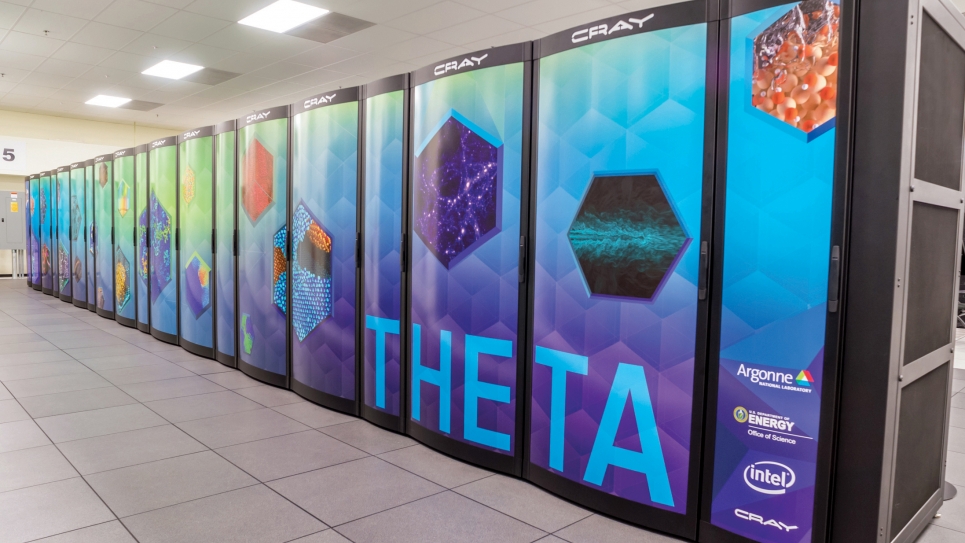Video presentation of our System Introduction
Theta is an 11.7-petaflops supercomputer based on Intel processors and interconnect technology, an advanced memory architecture, and a Lustre-based parallel file system, all integrated by Cray’s HPC software stack.
Theta Machine Specs
- Architecture: Intel-Cray XC40
- Speed: 11.7 petaflops
- Processor per node: 64-core, 1.3-GHz Intel Xeon Phi 7230
- Nodes: 4,392
- Cores: 281,088
- Memory: 843 TB (192GB / node)
- High-bandwidth memory: 70 TB (16GB / node)
- Interconnect: Aries network with Dragonfly topology
- Racks: 24
ThetaGPU is an NVIDIA DGX A100-based system. The DGX A100 comprises eight NVIDIA A100 GPUs that provide a total of 320 gigabytes of memory for training AI datasets, as well as high-speed NVIDIA Mellanox ConnectX-6 network interfaces.
ThetaGPU Machine Specs
- Architecture: NVIDIA DGX A100
- Speed: 3.9 petaflops
- Processors: AMD EPYC 7742
- Nodes: 24
- DDR4 Memory: 24 TB
- GPU Memory: 7,680 GB
- Racks: 7
In large supercomputers, like Theta, you combine multiple computer processors (CPUs) and/or graphics processors (GPUs) into a single node. A node is like your desktop computer. It has a CPU on which the local operating system runs. It has local memory for running software. It may have GPUs for doing intensive calculations. Each node has a high-speed network connection that allows it to communicate with other nodes and to a large shared filesystem.
Large systems typically have worker nodes and login nodes. login nodes are the nodes on which every user arrives when they login to the system. login nodes should not be used for computation, but for compiling code, writing/editing code, and launching jobs on the system. A job is the application that will be launched on the worker nodes of the supercomputer.

